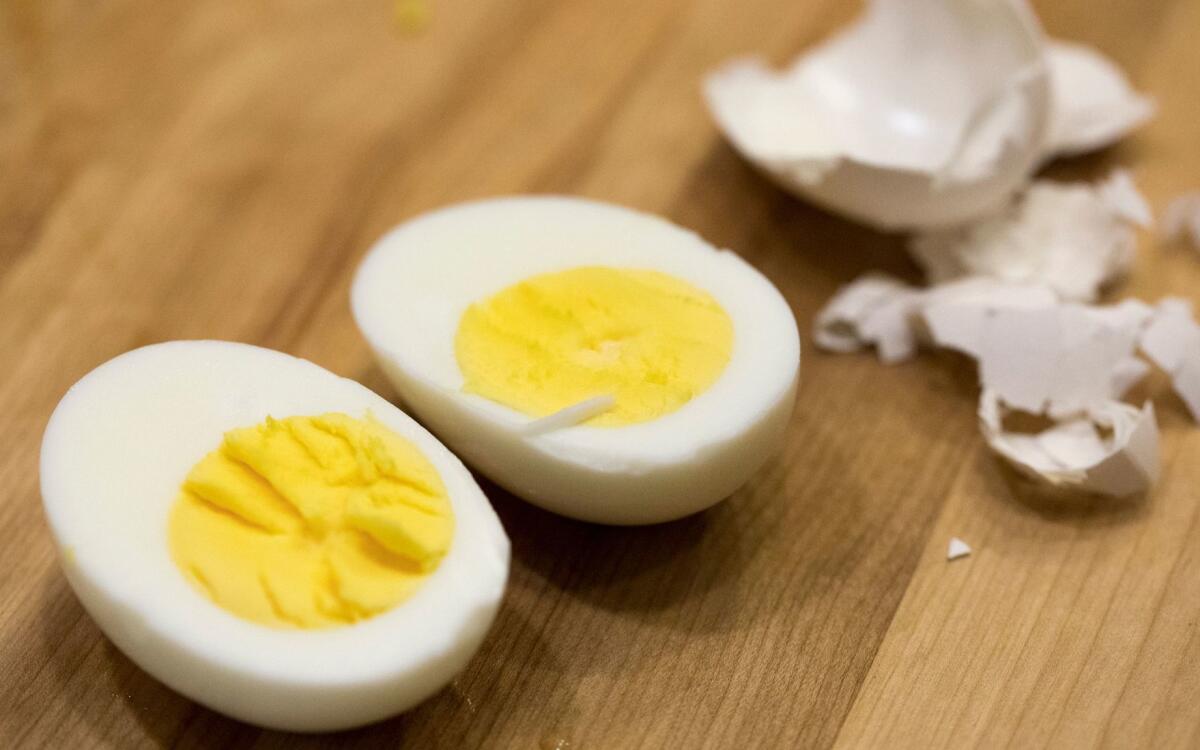Hard-boiled eggs

There are countless methods for making hard-boiled eggs, and as many opinions regarding which is the right one. The whole exercise can be frustrating, particularly for those of us who boil eggs only once or twice a year. Do I start the eggs in cold or hot water? How long do I boil them for? Should I shock them in ice water? And if so, when? And what about steaming eggs, or cooking them in the oven?
I have a method I settled on years ago, when I worked with a high-end restaurant group in Los Angeles and had to boil dozens of eggs every week. The method is simple, and forgiving.
Place the eggs in a pot just large enough to hold them in a single layer. Add enough cool water to cover the eggs by one inch. Bring the water to a boil and cook the eggs for three minutes. Then remove the pot from the heat and leave the eggs in the hot water to finish cooking. Depending on how you like your eggs, you might leave them in the water anywhere from five to 15 minutes before cooling them in ice water.
If you wait as little as five minutes before cooling, the yolks will be soft — with a rich golden color — and the whites will be firm but silky. Let the eggs sit in the water longer, and the yolk will continue to firm up, lightening in color.
I like to leave the eggs in the hot water for 15 minutes, which is long enough to fully cook the yolk without leaving it chalky. Then I place the eggs in a bowl of ice water until they’re cool enough to peel. That’s it.
Don’t worry about overcooking the eggs. Because the water is slowly cooling over time, you’re unlikely to find any of that dreaded grayish-green color in the yolk. I’ve even left the eggs in the water for a half-hour before cooling and haven’t had any problems.
And I haven’t had to worry about exploding eggs either. (You know, when the shell cracks and egg white seeps out like molten lava.) Because the eggs start in cold water, they’re less likely to crack as they boil. The trapped air has time to slowly bubble out of the porous shell while the water heats up, whereas when eggs are added to boiling water, the air needs to escape quickly, and often cracks the shell.
Sometimes, there’s nothing worse than going to all the trouble of cooking eggs, only to have your beautiful ovals reduced to pock-marked, well, things when you try to remove the shells. (Forget deviled eggs, you’re better using those mistakes for egg salad). These eggs shouldn’t be hard to peel at all. Crack the shell all around the egg, and gently peel it away (I find it easiest to start at the wide end of the egg, where there is an air pocket). Find the shell sticking to the white? Simply peel the eggs under cool running water.
You can find the method below. What you decide to do with the eggs — whether devil or decorate — is up to you.
Place the eggs in a pot large enough to hold them in a single layer. Fill the pot with enough water to cover the eggs by 1 inch.
Over high heat, bring the water to a rolling boil, about 10 minutes. Cook the eggs for 3 minutes.
Immediately remove from heat and set the eggs aside, leaving them in the hot water for 15 minutes. Remove the eggs and place them in a bowl of ice water until cool enough to peel. (If not using immediately, drain the ice water, dry the eggs and refrigerate them until ready to use.)
To peel the eggs, crack the shell evenly on all sides. Begin peeling at the wide end of the eggs (where there should be an air pocket), to make peeling easier. If the shell sticks to the eggs, peel the eggs under cool water.
Get our Cooking newsletter.
Your roundup of inspiring recipes and kitchen tricks.
You may occasionally receive promotional content from the Los Angeles Times.
















